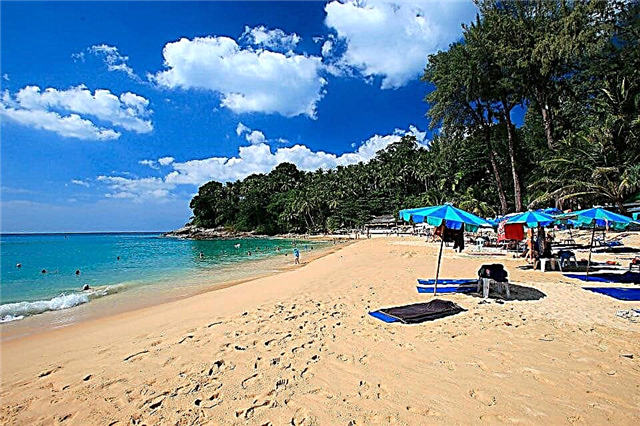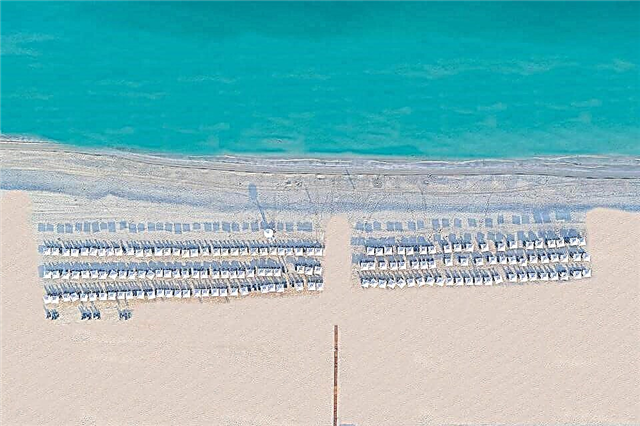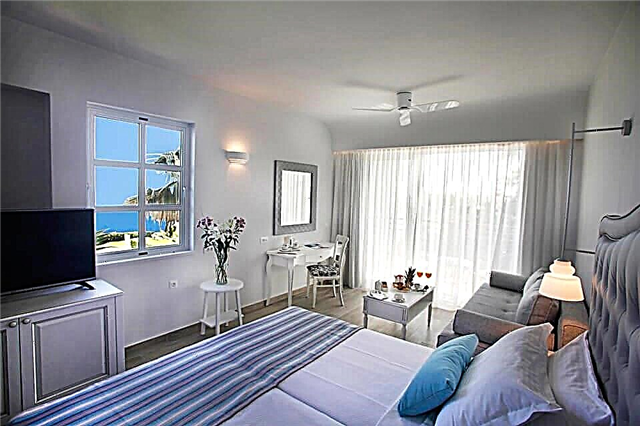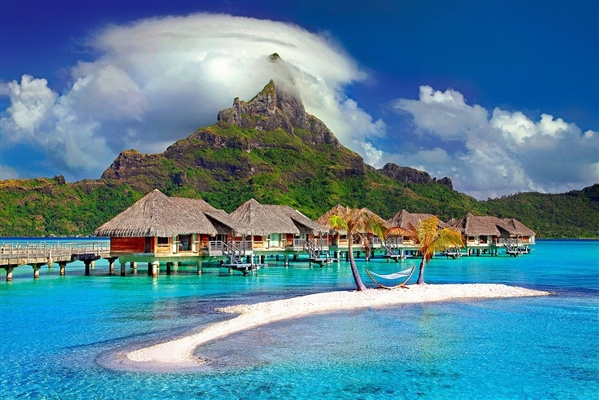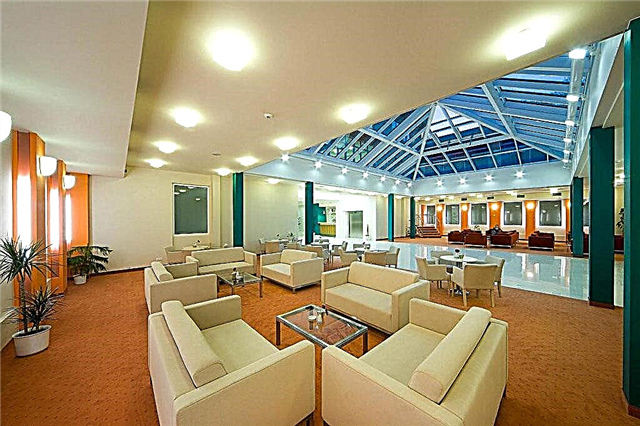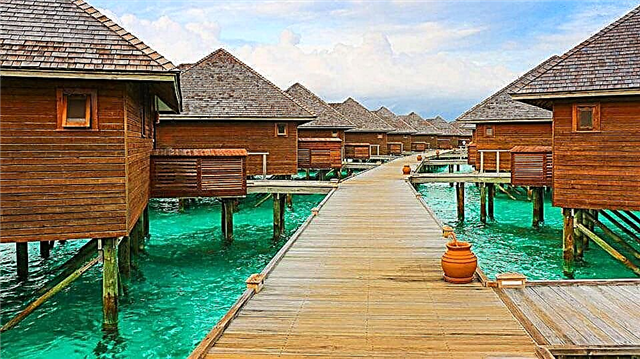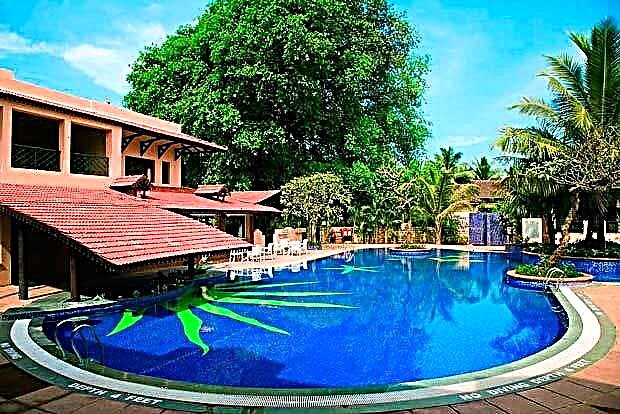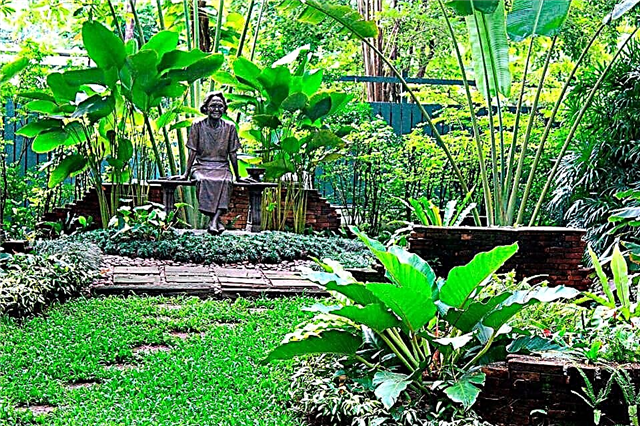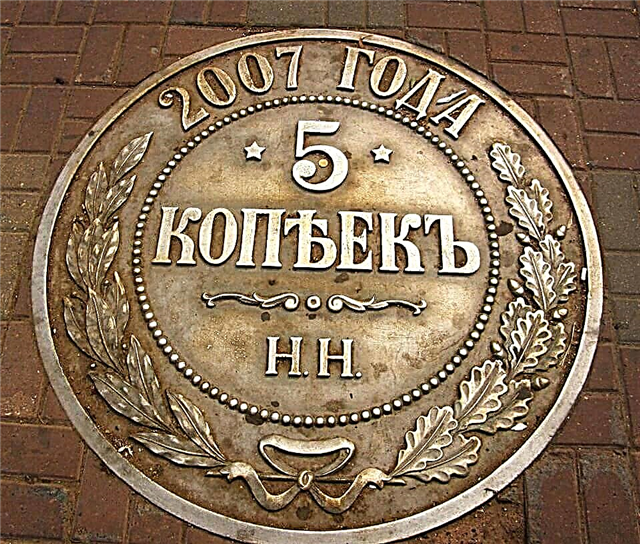Nizhny Novgorod is one of the most beautiful cities in Russia. There you can see ancient temples and cathedrals. The air of the ancient city is saturated with the Russian spirit. There are a lot of interesting places here, which can be seen in just a few days. Let's talk about the most interesting sights of Nizhny Novgorod, which you need to see first.
Bolshaya Pokrovskaya street

Bolshaya Pokrovskaya is the main street in Nizhny Novgorod. Stretching over two kilometers in length, it is one of the oldest and most picturesque in the city. Cars and buses are not allowed here. Almost the entire street is intended for pedestrians who want to see its merits. Bolshaya Pokrovskaya is very well located. It connects four main squares of the city at once.
Local residents affectionately call it "Pokrovka". A walk along the street conveys the incredible atmosphere of an old Russian city. Here you can find busts of famous writers: Pushkin, Tolstoy and Dostoevsky. There are a lot of funny sculptures, buildings with various architecture, museums, newest boutiques and shops on Pokrovka. Here you can have a snack in cozy cafes.
Traffic on Bolshaya Pokrovskaya is always busy. Street musicians, photographs with birds, a children's train plying - all this is very lively and interesting. A walk by night Pokrovka is very romantic and beautiful. Bolshaya Pokrovskaya is located in the very center of Nizhny Novgorod. You can get to the street by buses No. 3, 4, 9, 38, 45, 61, 90 or trolleybus No. 1 to Minin Square. You can get to Gorky Square by bus # 1, 26, 27, 30, 40, 41 or trolleybus # 6.
Nizhny Novgorod Kremlin

One of the most important sights of Nizhny Novgorod is the Nizhny Novgorod Kremlin. It began to be built in the 16th century. As a result, a whole city was built. The long history of Nizhny Novgorod originates here. Thousands of tourists come here every year. The task of the building was to protect the city from the raids of the Tatars. The Kremlin wall stretches for a distance of about 2 kilometers.
13 towers served as its fortification. Nowadays there are 12 of them left. When the danger of wars disappeared, the city administration bodies were settled in the Kremlin. They are still located on the territory of the complex. For lovers of walks, there is an alley of love and several restaurants. For people of art - an art museum and a philharmonic society. An eternal flame also burns here.
There is something for the curious tourist to see here. The Ivanovskaya Tower is the most powerful of all fortifications. Her main task was to guard the pier. Now it houses a museum. It receives guests every day from 8 am to 5 pm. The Kremlin is built on a hill. There is a funicular to facilitate the ascent.
Stunning landscapes open from the very top of the Kremlin. From here you can see two rivers flowing in the city at once - Volga, Oka. The Kremlin wall receives tourists every day from May to August from 10 am to 8 pm. September, mid-October - from 10 am to 6 pm. Mid-October - end of November - from 10 am to 5 pm. You can get to the Kremlin by bus 34, 54, 81 to the stop "Minin and Pozharsky Square".
Drama Theater named after M. Gorky

The theater, named after the world famous writer Maxim Gorky, is one of the oldest in Russia. Its age is more than two hundred years old. The institution owes its appearance to Prince Shakhovsky. He came to the city with his troupe, which consisted of serf actors. The prince was very keen on theatrical life. He himself chose the works for the performances. In addition to them, ballets and operas were staged on the stage of an amateur institution.
The repertoire mainly consisted of works by classics. The Shakhovsky Theater was popular and regularly staged performances over the years. After that, the owners began to change. The structure has survived the collapse, fire and reopening in another place. Now folk and honored masters of the Russian Federation continue to work in it.
The Nizhny Novgorod theater is famous for the fact that absolutely all the plays of Maxim Gorky were staged on the stage of the institution. His repertoire also includes performances based on the works of the best writers from around the world. The theater is located on the old central street Bolshaya Pokrovskaya, in a very beautiful building. Ticket offices are open every day from 10 am to 7 pm. Break from 13.30 to 13.50 hours. Daytime, children's and preferential performances start at 11 am. Evening - from 18.30 hours. The cost of tickets varies from 300 to 700 rubles. You can get to the theater by minibus No. 2, 4, 134, 160, 183, 198 to the stop "Ploschad Minin and Pozharsky".
Pechersky Monastery

Ascension Pechersky Monastery was founded in the 14th century. It is located at a distance of 3 km from the Nizhny Novgorod Kremlin. For many years, the monastery has been considered one of the most significant in Russia. The Nizhny Novgorod shrine was founded by Metropolitan Dionysius. He settled in this place in a cave dug by him. After that, other monks began to settle around it. This is how the Pechersk Monastery began its existence. A unique Laurentian Chronicle is kept on the territory of the shrine.
It was created here since 1377 by the monk Laurentius. Its piece "The Tale of Bygone Years" is known to everyone. In 1597 the temple was destroyed by a huge landslide. In this connection, it was moved 1 km along the Volga, to another place. The monastery has been closed since 1924. On its territory there are buildings, a restoration workshop and even a cinema.
The Pechersk shrine is located in a very picturesque place. Around it there is a green territory, and the structure itself is washed by the waters of the great Volga. The snow-white structure is striking in its scope. It is interesting that some of the walls and the bell tower of the monastery are inclined. Unfortunately, this is the imprint of time and landslides. You can get to the Pechersky Monastery by buses No. 2, 28, 40, 45, 52, 62, 74, minibuses No. 2, 16, 28, 40, 45, 140, 182, trolleybus No. 1 to the Sennaya stop. You will have to walk further to the monastery. Opening hours of the institution from 07.30 to 18.30 hours every day. The entrance is free.
Chkalovskaya stairs

The famous staircase of Nizhny Novgorod was built by three Soviet architects Muntz, Yakovlev and Rudnev. This is a huge structure that connects the two embankments of the Upper Volzhskaya and Nizhne-Volzhskaya rivers. It stretches from the "Hero" monument to the St. George Tower of the Nizhny Novgorod Kremlin. The staircase goes up the Volga slope and looks like a figure of eight. Observation platforms were built on its connections. To climb up, you need to overcome 442 steps. And the total number of steps is about 560 pieces. From here there are wonderful views of the city and the embankment. The staircase is framed by lanterns. In the dark, she looks very attractive and romantic.
There are two ways to get to the attraction. You can get to the top of the stairs by minibus no. 2, 4, 134, 140, 183, 198. Minibuses no. 42 and 117 go to the bottom of the building (the Geroi boat stop). The staircase is open all 4 seasons. its territory is free. If you decide to go here, be sure to wear comfortable shoes. It is also worth considering the weather conditions. In hot summer and in severe frost or ice, such a walk should be abandoned.
Annunciation Monastery

The Annunciation Monastery is a large-scale architectural complex located on the banks of the Oka. It appeared in 1221, together with the founding of Nizhny Novgorod. The monastery has gone through a lot of destruction and rebuilding.On the territory of the complex there are 5 temples, a bell tower, a holy spring flows. The largest cathedral is the Annunciation. Inside it, ancient frescoes and an iconostasis have been preserved. The bell tower offers a beautiful view of the river and the surroundings of the monastery. Today the monastery complex operates. Monks lead a strict and secluded life here. However, pilgrims from different places also come here. There are also guided tours.
On the territory of the shrine, there are buildings of the 17-19 centuries. There are workshops here: sewing, icon painting and candlestick and bakery. Monks are working on sewing clothes and embroidering icons. By the way, here you can order and buy a personalized icon.
Also, the church shop sells books and other souvenirs. You can get to the Annunciation Monastery by bus 26, 41, 42 or 43 to the bus stop of the same name. You can also take the metro to the Gorkovskaya station.
An adult ticket can be purchased for about 20 rubles. Children - 10 rubles. Provided that the number of your group of people is from 10 people. If you want to see the attraction alone, the cost of the excursion will be about 100 rubles per person. It is possible to visit the monastery complex for free with the blessing of the governor.
Verkhne-Volzhskaya embankment

The Verkhne-Volzhskaya embankment is a great place to walk along the majestic Volga River. It owes its appearance to Emperor Nicholas I. By his decree, the then unpresentable area near the river turned into a chic boulevard with its decoration - Alexander Garden. Unfortunately, the original view of the embankment has not survived to our time. But here you can see old stone buildings and streets lined with picket fences and cobblestones. The street is a favorite of the locals. Here they go for walks, make dates and hold city festivities.
The architecture of the embankment is made in the old Russian style. The mansion of the merchant Sirotkin and the estate of the merchant Rukavishnikov stand out against the background of other buildings. The latter is now the building of the museum-reserve. The former "House of Railwaymen" was made in a completely different style. The structure of 7 floors stands out favorably against the background of the low buildings of the embankment. You can get to the Verkhne-Volzhskaya embankment by minibus No. 2, 4, 134, 140, 155, 160, 171, 183, 198. Or by buses No. 2, 28, 40, 45, 52, 62, 74.
Peter's house

The most famous house in Nizhny Novgorod has a cultural heritage status. It is located in the very center of Nizhny Novgorod. The building got its name thanks to Peter the Great, who was staying in the house, according to the stories. The building is made of white stone. There are only about 30 houses like it now in the vicinity. At that time, the construction of such a building was very expensive, and not everyone could afford such a luxury. The house housed a city archive and a cheap shelter. After that, a historical museum was opened here. In the 20th century, a bar was opened in the basement of Peter's house. It gained great popularity thanks to the popular artists who started giving concerts here.
The basement is now closed by the authorities, who believe that it has no place in an institution with cultural heritage status.
Now Peter's house is not in the best condition. Nobody has repaired it for a long time. Not everyone dares to go on an excursion here. But if you are still thinking, then look at household items of the 17-18 centuries, a tiled stove and a large high relief in honor of the 300th anniversary of the Russian fleet. You can get to the memorial place by any bus to the stop "Dobrolyubova Street".
State Bank building
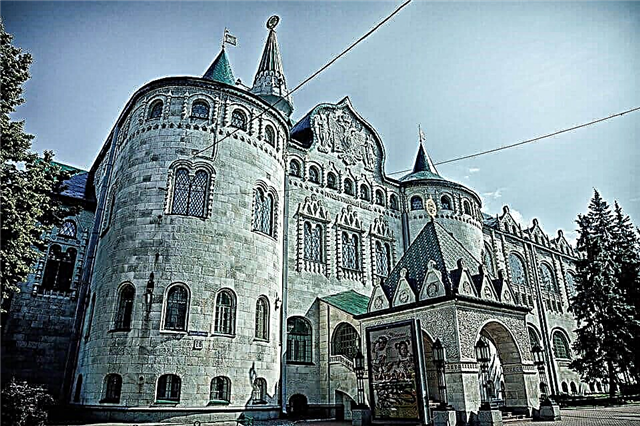
The State Bank building is another attraction of Nizhny Novgorod. The building was erected to commemorate the 300th anniversary of the reign of the Romanovs, so its construction was treated on a grand scale and pomp. The result is a huge building that looks like a medieval palace. The building is made in the neo-Russian style. The bank's pediment is built in the form of a church dome with a large coat of arms of the Russian Federation - a two-headed eagle with archangels. Slightly below the coat of arms of Nizhny Novgorod with a deer, covered with gilding, flaunts. The upper spire of the building is crowned with the coat of arms of the Soviet Union.
The interior of the bank is as luxurious as the exterior. The huge halls look like royalty. The walls are decorated with paintings by famous masters. Spacious galleries with semicircular windows on the ceiling turn into a chic drawing depicting eagles and luminaries. Now the bank, as well as many years ago, performs its direct function.
The building has a special hall dedicated to the history of the State Bank. Paid excursions are carried out here on pre-agreed requests. It is possible to visit the hall free of charge on May 17 - on the opening day of the State Bank of Nizhny Novgorod. Located on Bolshaya Pokrovskaya Street. You can get to the sight by buses No. 3, 4, 9, 61, 90 or trolleybus No. 1. Entrance to the bank is free. The doors of the building are open for visitors from 9 am to 6 pm on Mondays-Thursdays. On Friday, a short day until 17 o'clock.
Literary Museum

The City Literary Museum is dedicated to Maxim Gorky. There are expositions related to the personal life, everyday life and works of the great Russian writer. The museum also contains a huge number of books and manuscripts of other writers who lived and worked in Nizhny Novgorod. There is even an exhibition about the life of Seraphim of Sarov. Outwardly, the Literary Museum is a wonderful small building. Inside, it is also cozy and interesting.
Beautiful rooms with stucco and mirrors, mosaics and marble stairs. In the fireplace hall of the museum there is a grand piano played by Maxim Gorky for Vladimir Lenin. It was donated to the institution by the writer's first wife, along with the furnishings of Maxim Gorky's study, which was saved. In the museum you can also see the personal belongings of the great writer and unique photographs.
The Literary Museum is located on Minina Street, 26. You can get to it by bus number 4, 19, 40, 45, 52, 58, 90 or minibus number 2, 24, 31, 40, 45, 60, 85, 90, 97 , 98 to the stop "Technical University". The doors of the museum are open to visitors on Wednesdays, Fridays, Saturdays and Sundays from 9 am to 5 pm. On Thursday, the establishment is open from 11 am to 6.30 pm. Closed Monday and Tuesday. Ticket offices are open until 4.30 pm.
Michael the Archangel Cathedral

The place where this temple was built is considered the oldest in Nizhny Novgorod. It is made in a unique style of hipped roof architecture. Of course, this is not the cathedral that was founded here several centuries ago. However, the temple has been restored and is as close as possible to the ancient structure of the hipped roof church. The Archangel Michael Cathedral is a combined church and bell tower. The main tent, the largest and the largest one, serves as an adornment of the temple.
The building is snow-white with a bright green roof and a dome with a cross. The church also served as a burial vault for many princes of Nizhny Novgorod. Here lies the ashes of the hero of the militia Kuzma Minin. Inside the temple is calm and quiet. One of the most beautiful iconostases and beautiful old frescoes have been preserved here. One of them depicts the patron saint of the city, Yuri Vsevolodovich.
Archangel Michael Cathedral is open for tourists and excursions. You can visit it at any time from 8 to 18 hours in winter, from 8 to 19 hours in summer, except for the hours of services. Services are held every day from 8 am to 10 am and from 5 pm to 6.30 pm. Free admission. You can get to the place by bus No. 1, 3, 4, 9, 45, 61, 90, trolleybus No. 9, 13, 17, 26, 31, minibus No. 2, 4, 7, 24, 40, 41, 47, 71, 72 to the stop "Minin and Pozharsky Square".
Museum of entertaining sciences "Kvarki"

The Kvarki Museum of Physics and Interesting Sciences is not only an exciting, but also quite informative institution.It is located in the building of the Laguna shopping center in Nizhny Novgorod. The museum consists of exhibits such as optical illusion, natural phenomena, physical and mechanical experiments. The uniqueness of the institution is that you can touch the exhibits with your hands and take part in various scientific experiments.
Photos in a dark room, a soap bubble show, a miracle labyrinth - all this evokes a storm of emotions not only in children, but also in adults. The "Tilted Room" is especially popular. This is a great way to test your vestibular system. In the museum you can see how typhoons and sand dunes are formed, how water mills and power plants work.
Here time passes quickly and imperceptibly. Inquisitive children from about 10 years old will be delighted with a visit to such an institution. The kids will not be very and not very interesting here. You can get to "Laguna" by bus number 2, 4, 40, 45, 52, 58, 61, 72, 90 or minibus taxi number 10, 17, 24, 34, 41, 83 to the stop "Akademicheskaya".
Chambers of Afanasy Olisov

In one of the ancient historical districts of Nizhny Novgorod, where you can plunge into the atmosphere of the 17th century, there is a unique monument of ancient Russian architecture, an object of cultural heritage of Russia - the chambers of the merchant Afanasy Firosovich Olisov. The two-story white-stone building belonged to a noble Nizhny Novgorod supplier of bread, fish and salt to the royal court.
The façade of the chambers is abundantly decorated with beautiful relief tiles, cornices with elements of stone carving, intricate patterned platbands and kokoshniks on the window openings. The structure is covered with a wooden gable roof. The high front porch leads to the second floor, where the apartments of the merchant A.F. Olisova. The lower part of the building consisted of utility rooms. Currently, the architectural creation belongs to the Nizhny Novgorod diocese.
Deer sculpture

The deer has long been the main symbol of Nizhny Novgorod, symbolizing wisdom and the invisible guardian of nature. The five-meter statue of a cloven-hoofed animal can be seen by tourists and locals walking along the comfortable embankment of the Volga River. The monumental sculptural composition was donated to the city by the Hungarian consul in honor of the celebration of the Day of Russia. The grand opening of the monument took place on June 12, 2014.
The deer sculpture consists of stainless steel strips randomly connected to each other. Metal plates give the man-made masterpiece originality, strength and durability. The sharp edges of the elements of the art object can injure curious viewers who want to touch the sculpture, as warned by a sign on the lawn.
Monument to the announcement

On the facade of one of the old buildings in Nizhny Novgorod, there is a small bronze plaque imitating a private wall advertisement. This unique monument is dedicated to the ingrained tradition of the townspeople - to glue leaflets on street poles, fences and walls of houses with their advertisements for the sale, purchase or exchange of something.
The memo is a brass plate with tear-off tabs, on which the phone number is indicated. An unusual announcement is engraved on a memorial metal plaque offering an exchange of English childhood for childhood spent in Russia. According to the city legend, everyone who wants to change their lives for the better can touch the ad spines and make a cherished wish.
Monument to the Postman

The monument to the Postman is a popular sculptural composition of the pedestrian Bolshaya Pokrovskaya Street in Nizhny Novgorod. The monument was erected next to the main post office in 2006. The bronze figure depicts a 19th century letter delivery man dressed in a special uniform. A mail bag is slung over the shoulder of the postman. The bronze mail clerk leans on a bicycle made of the same metal.
Monument penny

On the main square of the Sormovsky district of Nizhny Novgorod, a monument to the "pyatak" is erected. Cast-iron five kopecks are built right into the paving stones of the street sidewalk. The diameter of the coin is about a meter. The old banknote with bronze plating is the prototype of the "penny" during the reign of Emperor Nicholas II.
There is a belief among local townspeople that the Nizhny Novgorod patch contributes to material well-being and the fulfillment of the most intimate desires. It is enough just to rub the coin with your foot for the penny to bring success in life.
Monument to Evgeny Evstigneev

Walking along Bolshaya Pokrovskaya Street, tourists cannot pass by the bronze sculpture of the outstanding actor of the 20th century and a native of Nizhny Novgorod - Evgeny Evstigneev. The monument is installed next to the drama theater, where Evgeny Alexandrovich reaped his first successes in the acting field. The opening of the sculpture was timed to coincide with the 80th anniversary of the birth of the People's Artist of the USSR.
As conceived by the author of the sculptural composition, the master of theater and cinema sat on a bench without a pedestal. A pensive look, a hat in his hand, a coat thrown over his leg - all this creates the feeling that Evgeny Evstigneev has sat down to rest for a short time after the performance he has played. The monument is very popular among the townspeople and tourists, as evidenced by the actor's polished nose. Everyone who has sat down on a bench considers it his duty to rub this part of his face for good luck.
Exotarium

In the basement of the Palace of Culture. Ya.M. Sverdlov, a small menagerie of tropical and rare in their beauty animals collected from all over the world is housed. This is the Nizhny Novgorod exotarium, the inhabitants of which are more than 100 species of various fauna representatives. Aviaries, terrariums and aquariums contain reptiles, amphibians, mammals, birds, invertebrates and fish.
The impressive collection of Exotarium makes a good impression. Visitors to the exhibition complex can see assorted snakes, spiders, lizards, monitor lizards, turtles, iguanas, parrots, owls and even crocodiles. Of particular interest is the giant flying fox with incredible sharp hooks instead of front legs. The "cute" creature wraps itself in its own wings and hangs motionless upside down.
It is impossible to take your eyes off the white-eared marmoset, the African centipede and the talking toucan. The kingdom of unique exotic animals is open daily from 10:00 to 19:00.
Monument to Minin and Pozharsky

At the foot of the Nizhny Novgorod Kremlin stands the famous monument to Minin and Pozharsky. The monument is a miniature copy of the famous statue located in Moscow on Red Square. The sculptural composition is dedicated to the true heroes of the Fatherland, who preserved the Russian statehood.
At the beginning of the 17th century, it was in Nizhny Novgorod that the formation of the militia began under the leadership of the zemstvo head K. Minin and prince D. Pozharsky to oppose the Polish invaders. The people's squad played a central role in the expulsion from the territory of Russia of foreign invaders, who by that time were already in charge of Moscow.
Dressed in antique robes, bronze figures of the heroes-liberators are mounted on a pedestal made of red granite. Kuzma Minin decisively points towards the enemy with one hand. Sitting next to him is Prince Pozharsky with a shield. Both hold on to a massive sword with their hands. Thus, the idea of national unity is embodied. The Nizhny Novgorod monument to Minin and Pozharsky was opened in 2005.
Boat "Hero"

The ennobled territory of the Nizhnevolzhskaya embankment is a favorite resting place for citizens and guests of the city. There are many cultural heritage sites along it, among which the memorial boat "Hero" deserves attention.The legendary longboat stands on a high granite pedestal at the foot of the longest staircase in Russia, called Chkalovskaya. A small river vessel has been surfing the Volga River since 1916.
During its long history, the boat took an active part in the Civil and Patriotic Wars. Machine guns and anti-aircraft guns were installed above its armored sides. Also, the steamer was used to tow oil caravans. In 1967, the boat served as a floating museum of the Volga Flotilla's military glory. Now the veteran ship is permanently docked and is a popular attraction in the city.
Blinovsky passage

The route of every guest of Nizhny Novgorod must pass through Rozhdestvenskaya Street, the expressive look of which is given by an ancient architectural ensemble of the mid-19th century. Here merchants and industrialists built their mansions, banks and shops. Blinovskiy passage is one of the central decorations of the street.
The impressive four-story building belonged to the richest Nizhny Novgorod merchants, the Blinov brothers, and was intended for leasing premises to other entrepreneurs in the city. It was a kind of shopping center. Inside were commercial offices, shops, banks, restaurants, warehouses, residential apartments, as well as a hotel and a telegraph office.
The dark red facade of the Blinovsky passage, divided by five projections, is abundantly decorated with architectural elements in the form of square recesses, ornamental brickwork and carved window frames with pediments. The first floor of the building is decorated with arches with columns. Today, the premises of the Blinovsky Passage are also used by various offices, shops and restaurants.
Komsomolskaya square
The geographical center of Nizhny Novgorod is Komsomolskaya Square. The first information about this territory is mentioned in the chronicles from the 17th century. For a long time, there was a wasteland here, where residents from the surrounding settlements came for sand for the production of bricks. The modern Komsomolskaya Square emerged after the opening of the new Molitovsky Bridge across the Oka River in 1965. On the square, tourists will not find any historical monuments of architecture. A circular tram movement is organized here. In the center there is a high light pole.
Fedorovsky embankment

One of the most picturesque places in Nizhny Novgorod - the Fedorovsky embankment - is located on the hills, the slopes of which are striped with a cascade of winding footpaths. A breathtaking panoramic view of the confluence of the Oka and Volga rivers, ancient buildings, majestic temples, a grandiose football arena and other architectural sights of the city opens from the high bank. A popular walking area among locals and tourists is named after the Soviet geologist Nikolai Fedorovsky.
The multi-level embankment consists of terraces, stairs, observation platforms, bridges and numerous paths. Flowerbeds, tall trees, comfortable benches and green lawns on the steep hills create a complete pleasant impression of the picturesque place. On one of the observation platforms of the embankment, the only monument in Russia to the French writer Jules Verne is erected.
The sculptural composition is a balloon with the author of world famous adventure novels in its basket. Walking along the well-groomed alleys, tourists can see a bronze statue of the great writer and playwright Maxim Gorky. He sits thoughtfully with a cane and looks into the distance.
Church of the Nativity of John the Baptist at the Auction

An Orthodox white-stone church in the name of the Nativity of John the Baptist rises at the foot of the Kremlin hill on the National Unity Square. The history of the cult shrine dates back to the 15th century. Initially, on the site of the modern cathedral, there was a wooden church, from the porch of which in 1612 Kuzma Minin urged the people of Nizhny Novgorod to start a liberation struggle against foreign invaders. The construction of the stone structure began decades later. Over the years, the temple has been rebuilt several times. In Soviet times, the church was closed. The building was dilapidated and was not used for its intended purpose.
The Church of the Nativity of John the Baptist regained its original appearance only in 2005. An apse and a rectangular one-story chapel with a hipped three-tiered bell tower are attached to the main two-story building, which has a cube-shaped plan. The buildings form a single architectural ensemble. The temple is crowned with a four-pitched green roof. Five gilded domes are mounted on drums decorated with openwork stone carving. The facade of the church is decorated with kokoshniks, cornices with ornaments and arched windows framed by graceful columns.
In the interior of the temple you can see a beautiful iconostasis with numerous gilded carvings. The walls of the spacious rooms are painted with biblical scenes from the lives of the saints.
Christmas (Stroganov) Church

The pearl of Rozhdestvenskaya Street in Nizhny Novgorod is truly the Stroganov Church, located on the right bank of the Volga River. The amazingly beautiful architectural landmark of federal significance attracts local parishioners and tourists with its magnificently elegant appearance. The temple was founded at the end of the 17th century at the expense of a merchant, politician and nobleman - Grigory Stroganov. During its long history, the cult building was destroyed several times, and then restored to its original appearance.
Due to its high artistic value, the temple survived during the anti-religious struggle of the Soviet regime. The return of the Orthodox shrine to believers took place in the 90s of the XX century. The Stroganov Church has a complex multifaceted expressive silhouette. It consists of a main quadrangle, a three-apse altar, a refectory and a bell tower with a clock. The red facade of the temple ensemble is abundantly decorated with intricate white-stone lace, elements of skillful stucco molding, carved window frames and Corinthian columns.
The surfaces of the five domes are covered with multi-colored scaly mosaics. The interiors of the temple amaze with their splendor. The walls and ceilings are decorated with stucco and colorful frescoes. Of interest is the gilded four-tiered iconostasis. It is decorated with filigree carvings representing the motifs of weaving a vine with bunches of fruits.
Alexander Nevsky New Fair Cathedral

At the confluence of the Volga and Oka rivers, the majestic Alexander Nevsky New Fair Cathedral rises. The slender Orthodox church with tent-roofed domes is one of the three tallest churches in Russia. The structure rises up 87 meters. The construction of the cathedral began at the initiative of the Nizhny Novgorod merchants, who thus expressed a desire to immortalize the arrival of Emperor Alexander II to the annual fair.
The lengthy construction of the grandiose structure was completed only at the end of the 19th century. The cathedral was distinguished by the fact that its parishioners were merchants and guests of honor who came to the fair in Nizhny Novgorod. After the revolutionary events, the cathedral underwent many years of persecution, oblivion and destruction. The restoration and revival of the shrine began in 1983. The Alexander Nevsky Church is an equilateral cross in plan.
Octagonal tents are placed on light drums, framed by rows of kokoshniks. The beige facade of the church is decorated with cornices with ornamental stripes, lancet window openings and arcature belts. Next to the temple, a four-meter bell weighing 60 tons is installed in a special design. In the interior, the carved wooden iconostasis, which is 23 meters high, attracts attention.Colorful ceiling and wall paintings of saints' images evoke gracious feelings. In the interiors of the temple, you can see many ancient icons in gilded frames.
Main Fair House

From time immemorial, Nizhny Novgorod has been the capital of wholesale and retail trade. Merchants from all over the Russian Empire came to the city for the largest fairs. The volume of trade was of great economic importance for the state. In the 19th century, a monumental fairground complex was erected on the spit of the Oka and Volga, which later became an architectural landmark of Nizhny Novgorod. The first floor was occupied by shops, and the second tier was intended to accommodate trade committees, a bank branch, telegraph and post office.
Elements of ancient Russian architecture are embodied in the elongated facade of the majestic Fair House. This is evidenced by the massive fortress towers with hipped roofs and the abundance of snow-white stone carvings. Columns, decorative cornices, arches, kokoshniks and rectangular recesses give expressiveness to the architectural creation. Today the cult building is used for various exhibitions, forums and conferences.
The Rukavishnikovs' estate

The gaze of tourists is mesmerized by the luxurious three-storey estate of the 19th century, located on the Verkhnevolzhskaya embankment not far from the Kremlin. This magnificent and solemnly ceremonial baroque palace belonged to the noble merchant family of the Rukavishnikovs. After the revolution, a local history museum was opened in the building. Today the estate is a state historical and architectural museum-reserve.
The mansion of a gentle blue hue is replete with decorative elements. The facade of the building is generously decorated with exquisite snow-white stucco molding, a balustrade, as well as flowerpots, caryatids, lions, Atlanteans, angels and other sculptural compositions. The interiors of the palace amaze with special pomp. The walls and ceilings of the halls of the estate are faced with intricate openwork stucco moldings, painted with picturesque relief frescoes and decorated with numerous sculptures.
Carved furniture, tall mirrors, parquet flooring and carved lamps correspond to the aristocratic surroundings of the premises of the estate. The Merchant House is open to visitors every day except Monday. Working hours: from 10:00 to 17:00 (Tuesday-Thursday) and from 12:00 to 19:00 (Friday-Sunday).
Park Switzerland

In the Prioksky district of Nizhny Novgorod, the amusement park "Switzerland" stretches for as much as four kilometers along the high bank of the Oka River. The favorite place of the townspeople for a fascinating and measured rest occupies an impressive territory of over 300 hectares. The park was founded in 1903 by Nizhny Novgorod high school students. Under the guidance of their teachers, the students planted thousands of tree saplings on the Oka slope: oak, aspen, birch, larch and pine. For several years, the territory began to literally drown in groves of various plants.
Park "Switzerland" is a picturesque forest green area with landscaped paths, attractions, cafeterias and a zoo. Here everyone can take a walk in the bosom of nature and contemplate the panoramic surroundings of the city from the slope. The zoo is home to about 80 animals, including bears, lions, bison, wolves, lynxes and other representatives of the fauna.

